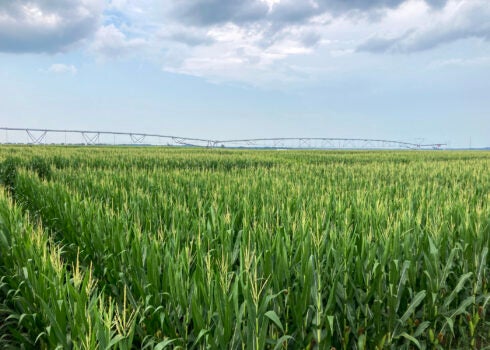MSU researches efficient crop irrigation strategies
Published 8:51 am Thursday, April 25, 2024
By Bonnie Coblentz
MSU Extension Service
Knowing when and how to irrigate are questions every grower with the ability to water their farmland on demand face each year.
Irrigation costs per acre are among the highest inputs growers face. In a state with the capacity both for extreme drought and high temperatures as well as prolonged rainy periods, the question of whether or not to irrigate is very important.
Scientists with the Mississippi State University Extension Service and the Mississippi Agricultural and Forestry Experiment Station annually dedicate significant resources addressing these questions as they pertain to the state’s primary row crops.
In Mississippi, about 50% of the state’s agricultural farmland is irrigated. The majority uses furrow irrigation, where water is released from flexible pipe laid along a field edge and allowed to run down furrows to the low end of the field. The remaining irrigated acres primarily use overhead irrigation, where water is sprayed from an arm of sprinklers that move across a field.
Drew Gholson, Extension irrigation specialist, has gathered data from a three-year study of furrow irrigation spacing. Dave Spencer, an Extension pivot irrigation specialist and MAFES researcher, has two years of research on the timing of pivot irrigations.
Gholson is coordinator of the National Center for Alluvial Aquifer Research and works from MSU’s Delta Research and Extension Center in Stoneville. There, Gholson and associates tested crop harvest yields in a field where water was run down furrows at varying distances apart.
“With any type of irrigation, you have to try to get the timing right,” Gholson said. “You can have oversaturation issues where the soil stays too wet too often, and that hurts our yield.
“But if you wait too long, some soils crack too much and take too long to regain an appropriate moisture level,” he said.
In his study, Gholson measured the yield results when water was flowed down every furrow, every other furrow, every fourth furrow, or every eighth furrow. Spacing between irrigated furrows ranged from just over 3 feet to just under 27 feet.
“We applied the same amount of water to the field regardless of how many furrows were skipped,” Gholson said. “We’re not putting out less water but distributing it differently across the same area.”
They used soil moisture sensors to track the movement of water across the heavy clay soils at the research station in Stoneville.
“What we found was that in these cracking clay soils, water flows down to the bottom of the wide cracks first, then spreads laterally and finally rises up to the soil surface,” Gholson said. “Even when we only sent water down one furrow out of eight, the water moved laterally from each irrigated furrow and met in the middle within an hour.”
This finding is important because with the heavy clay soils found across much of the Delta, furrow irrigation typically leads to a saturated soil profile. Rain soon afterwards leaves the soils saturated for a prolonged period, which is harmful to crops grown on that soil.
“We’re trying to figure out how to spread the water across the field and not have a saturated soil profile after furrow irrigation,” he said.
Their study found higher corn yields at the high end of the field when using the 27-foot spacing than when using narrower spacings. At the low end of the field, yield was not statistically different among the four spacings tested.
“Besides the opportunity to improve yield, widening the spacing of irrigated furrows has the potential to pump less water and conserve the Delta’s groundwater resources,” Gholson said.
Spencer conducted his research on overhead, pivot irrigation at the MSU Black Belt Branch Experiment Station in Brooksville and at the Delta Research and Extension Center.
He investigated what soil moisture threshold should be used to initiate overhead irrigation.
“The results indicate that overhead irrigation events should be started at a wetter soil moisture than is recommended for furrow irrigation,” Spencer said. “The reason for the difference between overhead and furrow irrigation thresholds is the amount of water each delivery system supplies.”
Furrow irrigation systems can apply 3 inches of water very quickly to a field, while overhead systems tend to apply much less water in the same amount of time.
“With furrow irrigation, we are balancing letting the soil get too wet or too dry, while with overhead irrigation, we try to keep the soil moisture in the optimum range,” he said.
Spencer said management of each irrigation delivery system should be approached differently.
“Furrow irrigating too soon can risk prolonged periods of saturation,” Spencer said. “Conversely, it is harder to saturate the soil profile with pivot irrigation, but it is a lot easier to fall behind and experience drought stress.
“When we overhead irrigate correctly, we’re staying the majority of our time in that sweet spot with the right amount of water and air in the soil,” he said.
Learn more about MSU’s work with issues regarding water use in agriculture at https://ncaar.msstate.edu.



